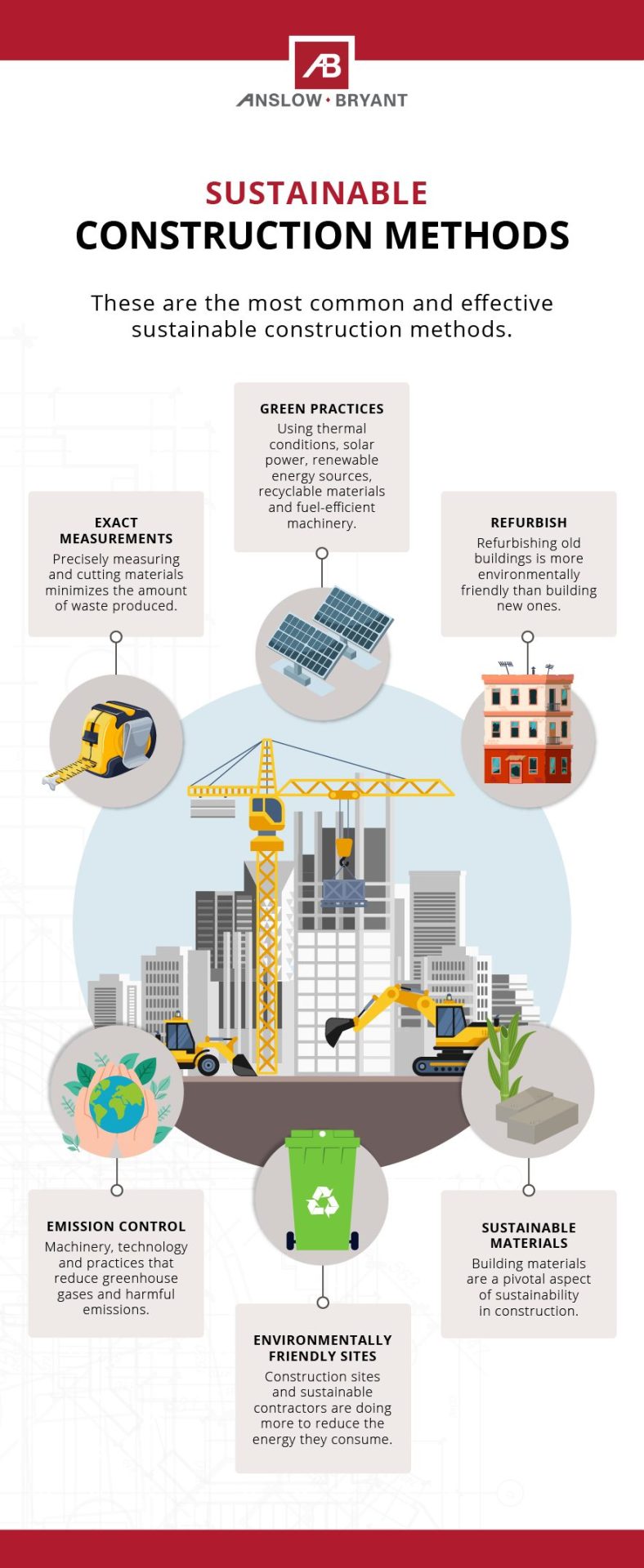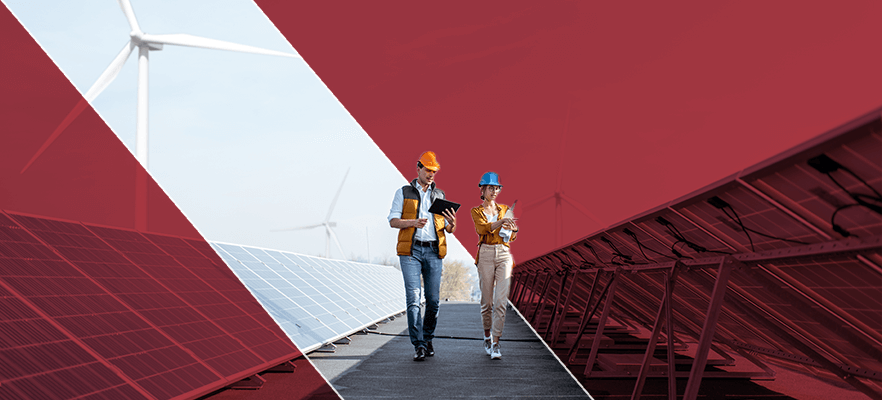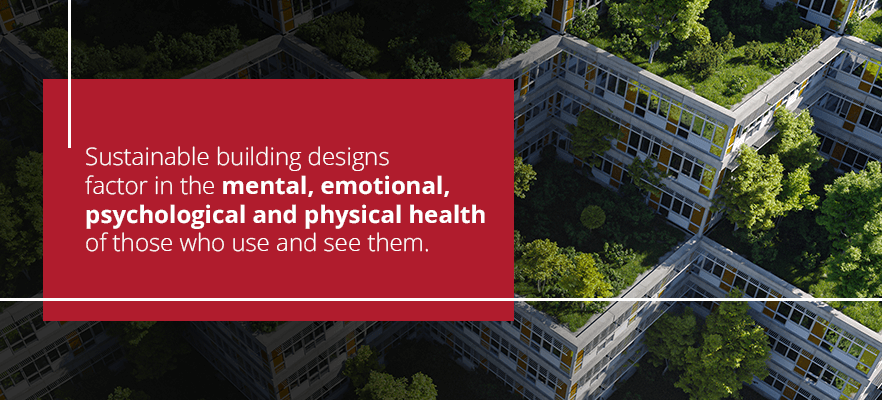What Does Sustainability in Construction Look Like?
Humans face the unprecedented challenge of climate change and its related extreme weather events like hurricanes, wildfires and floods. There has never been a better time to focus on preserving our planet’s future by changing how we develop our economy and construction industry. Sustainability in construction has become more crucial than ever. Learn about sustainability in commercial construction and why environmentally friendly building practices matter.
Understanding Sustainability in Construction
The construction sector uses more natural resources than most other industries. As a result, we must find a way to encourage economic growth while preserving the environment as much as possible in the process.
Sustainable construction refers to the efforts and practices used to reduce emissions, waste and environmental impact. It involves using renewable energy sources and recyclable materials, while enforcing practices that minimize environmental impact. These practices are part of the process, from the initial blueprints to the finished building.
Sustainability in construction has three pillars.
- Economic: Companies must be profitable to stay in business. Job creation, employment rates, compliance and the proper governance of ecosystems fall under this pillar, among other factors. Companies that enforce this pillar’s values show transparency and efficiency to their investors, which inspires trust.
- Environmental: The planet’s well-being is the primary concern of the environmental pillar. This pillar advocates for improving water and air quality by reducing carbon emissions, greenhouse gases and resource waste. Governments and their stakeholders must put more effort into preserving and restoring natural ecosystems. The United National Environmental Program is in charge of enforcing environmental sustainability globally. UNEP pushes stakeholders like NGOs, state governments and national environmental protection agencies to follow sustainable practices.
- Social: The third pillar promotes healthier living, better reputation and a global impact. The environment influences our physical and mental health. Sustainable architecture improves people’s quality of life while protecting the planet for future generations. This pillar also promotes the value smart construction can add for business owners.
Sustainable Construction Methods

Sustainable construction goes beyond the design of a building and the materials used to make it. These are the most common and effective sustainable construction methods.
- Exact measurements: Precisely measuring and cutting materials minimizes the amount of waste produced.
- Green practices: Using thermal conditions, solar power, renewable energy sources, recyclable materials and fuel-efficient machinery are some of the many ways the construction industry can lessen its environmental impact.
- Refurbish: Refurbishing old buildings is more environmentally friendly than building new ones.
- Emission control: Machinery, technology and practices that reduce greenhouse gases and harmful emissions during construction are a big part of sustainable construction.
- Environmentally friendly sites: Construction sites and sustainable contractors are doing more to reduce the energy they consume. Other environmentally friendly practices they follow include recycling food packaging, not smoking, using reusable containers, running paperless offices, preserving water and other small things that add up quickly.
- Sustainable materials: Building materials are a pivotal aspect of sustainability in construction. A handful of the many materials used in modern construction include bamboo, pollution-absorbing bricks, 3D-printed concrete, stone, laminated timber, recycled glass, steel and reclaimed rubber.
Benefits of Sustainable Construction
Sustainable commercial construction should be the future all businesses embrace. This type of sustainability is helping more than the environment — communities and individuals will feel the long-term benefits. Here are some of the proven benefits sustainable construction brings.
- Reduced waste: Using exact measurements, recycling materials and 3D printing have significantly decreased the waste produced in the construction industry.
- Facilitates healthier living: Sustainable building designs factor in the mental, emotional, psychological and physical health of those who use and see them.
- Reduces carbon footprint: According to reporting from the Center for Climate and Energy Solutions, buildings contribute 29% of all greenhouse gas emissions in America. Corporations, construction companies and property owners have started implementing more sustainable construction practices to decrease this number. Ultimately, their efforts will benefit the environment and the ozone layer.
- Boosting the economy: The construction industry drives the U.S. economy. The U.S. Green Building Council reports that the green building industry contributes over $134 billion of income to American workers.
- Reduced costs: Sustainably built buildings need less maintenance, reducing operating costs and saving money that can go toward other expenses. Eco-friendly materials are affordable and do not compromise structural integrity or construction quality.
Challenges of Sustainable Construction
Specific roadblocks are obstructing the widespread adoption of sustainable construction worldwide.
- Lack of green building expertise: Green building is a relatively new field, so industry experts are few and far between. Finding skilled labor in this area is difficult, making it hard to form teams of well-qualified workers.
- Unwillingness to change: Some construction companies are reluctant to change their ways. They are comfortable with what they know or, in some cases, need more motivation to implement more sustainable practices.
- Lack of regulations: Fewer regulations and codes apply to sustainable construction and green buildings. Far better-defined laws and rules exist for non-sustainable construction methods.
- Lack of government incentives: A lack of government incentives is another significant challenge facing sustainable construction. Tax breaks and grants will help more companies willingly change their operations and prioritize environmentally friendly projects.
Partner With Anslow-Bryant
Sustainable construction is the future. For the good of the planet and the industry, more people must accept these practices. Anslow-Bryant takes pride in our sustainability values and our construction skills. We have an impressive portfolio of projects and work that showcases our understanding and passion for green construction.
With 30 years of experience working on commercial properties and providing building services, we are here to give you what you want. Let us help you build the building you’ve dreamed of with sustainability, dedication and expertise. To find out more, contact us online or call us at 713-626-1216.






